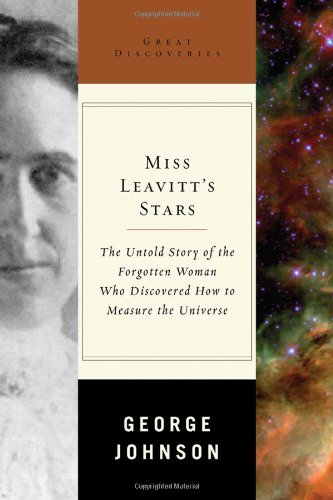A forgotten heroine of science and how she solved one of the crucial mysteries of the universe.
Almost forgotten is the Harvard Observatory "computer"―a human number cruncher hired to calculate the positions and luminosities of stars in astronomical photographs―who found the key to the mystery. Radcliffe-educated Henrietta Swan Leavitt, fighting ill health and progressive deafness, stumbled upon a new law that allowed astronomers to use variable stars―those whose brightness rhythmically changes―as a cosmic yardstick. Miss Leavitt's Stars is both a masterly account of how we measure the universe and the moving story of a neglected genius
10 illustrations









